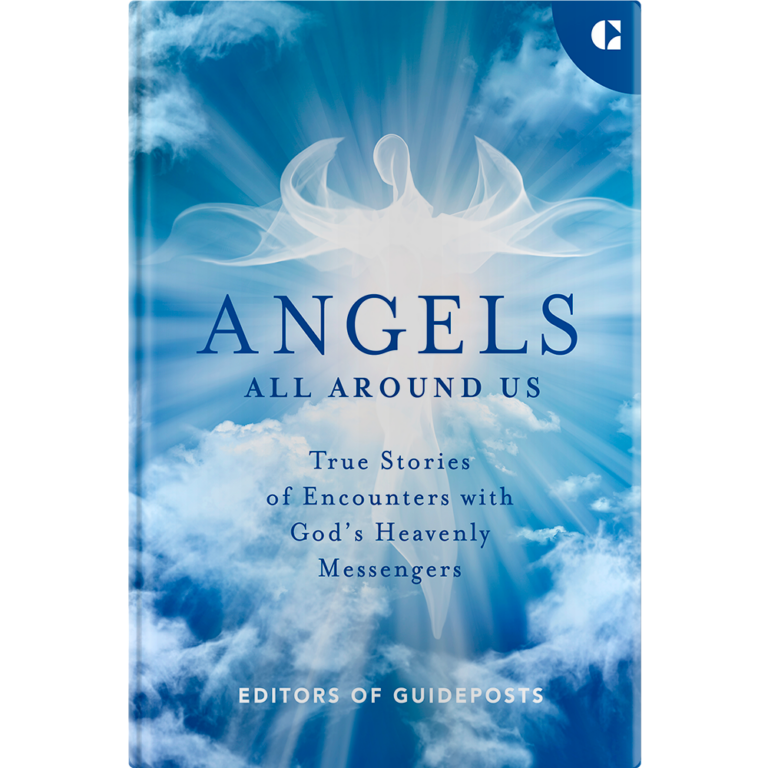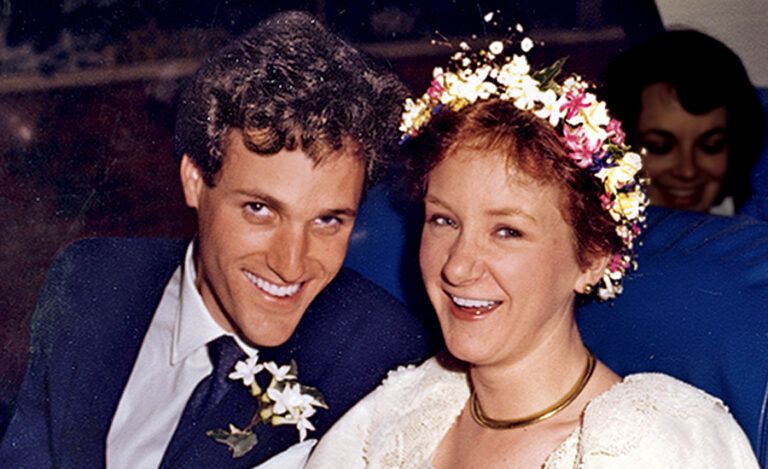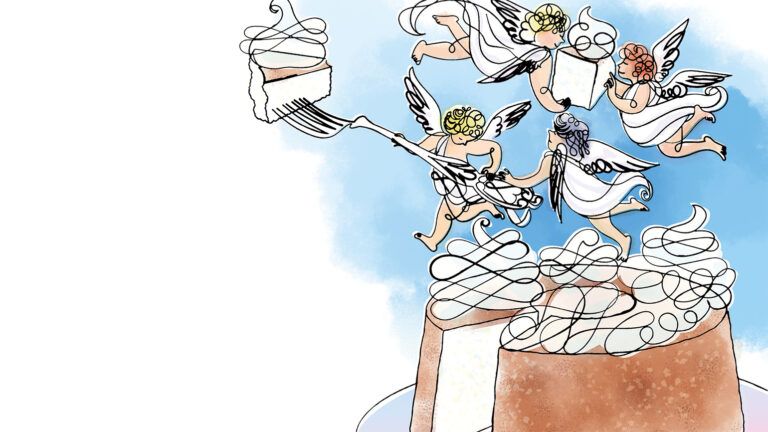I stood in the chill March wind staring up at a sculpture carved 600 years ago into the keystone above a doorway.
The carving, in high relief, depicted two angels with great folded wings holding between them a wreath of roses surrounding a pair of architect’s compasses.
I was visiting the ruins of Heidelberg Castle high above the Neckar River in Germany. Sightseeing is hard on the feet and I badly wanted to sit down. I kept thinking of a café I’d passed, climbing up to the castle: the signboard on the sidewalk showed a mug of hot chocolate topped with a glorious pyramid of whipped cream.
And still I lingered, puzzling over that carving. There was nothing unusual about the depiction of the compasses; medieval stonemasons often chiseled symbols of their trade as a kind of signature in stone. Nothing unusual, either, about a decorative wreath of roses.
What surprised me were the faces of the angels. Instead of the solemn and majestic features conventional for portrayals of these mighty messengers of God, these were children.
The slender brochure I’d picked up at the castle identified this building as “Ruprecht’s Palace”—all that remained of it—“built in 1400 for Prince Ruprecht III to celebrate his election as King of Germany.” Nothing about the carving above the entrance. Footsore and shivering I stayed there, but was unable to walk away, as though those silent angels had something to tell me.
All afternoon I’d felt a strange affinity for this destroyed fortress within its crumbling ramparts, maybe because in my own small way I too faced the loss of a “castle.”
After Easter, my husband and I were to leave our beloved home of 50 years and move to a small apartment. Might there be a message here for me? I set out in search of someone who could tell me the meaning of the sculpture.
I found her, an American tourist like myself, but armed with a hefty guidebook in German. This is the history she translated for me…
Ruprecht’s master builder, nameless as were most artisans in 1400, had two little sons, twins, who enjoyed watching their father at work. The pulleys and hoists, the hammering, the coming and going of mules and cart horses, held an endless fascination. Day after summer day, as the palace for King Ruprecht rose, the little boys climbed higher on the scaffolding to watch the lively scene.
The building was nearing completion when the tragedy occurred. The wooden platform on which the twins stood collapsed, killing both children.
Their devastated father laid down his compasses and other tools and shut himself away.
Without his supervision, work on the new palace ceased. For weeks as summer turned to fall, the construction site lay silent and deserted. The only thing the grieving father felt able to do was to cut a dozen roses each day from the castle garden—picking only white roses, white for the dead—and weave them into a wreath for the twins’ grave.
No one knows how much time passed this way, just that one night the father had an extraordinary dream. As he slept it seemed to him that two huge angels entered the room. They were his sons’ guardian angels, he believed, those angels assigned to every child at birth.
They brought news of his little boys. The angels told him that the twins were well and happy, and eager for him to finish the building they had watched going up with such excitement.
When the father woke the next morning, it was told that he found a wreath of roses—red roses for the living—at the foot of his bed. What is certain is that the master builder returned to his labors and Ruprecht’s palace was completed. In memory of his dream, the father carved on the keystone the two angels, the rose wreath, and the two compasses.
Regarding the angels’ child-like faces…perhaps in his dream the visages of the angels had been too bright to see or too unearthly to depict. In their place he carved the faces of his two little boys, alive, he now knew, forever.
What a message for Easter—and for me right now! I thought as I thanked my informant. When something precious is taken away, as ordinary as the loss of a well-loved house or as overwhelming as a death, this is the season when angels meet us at the tomb with the glorious shout of life undefeated.






